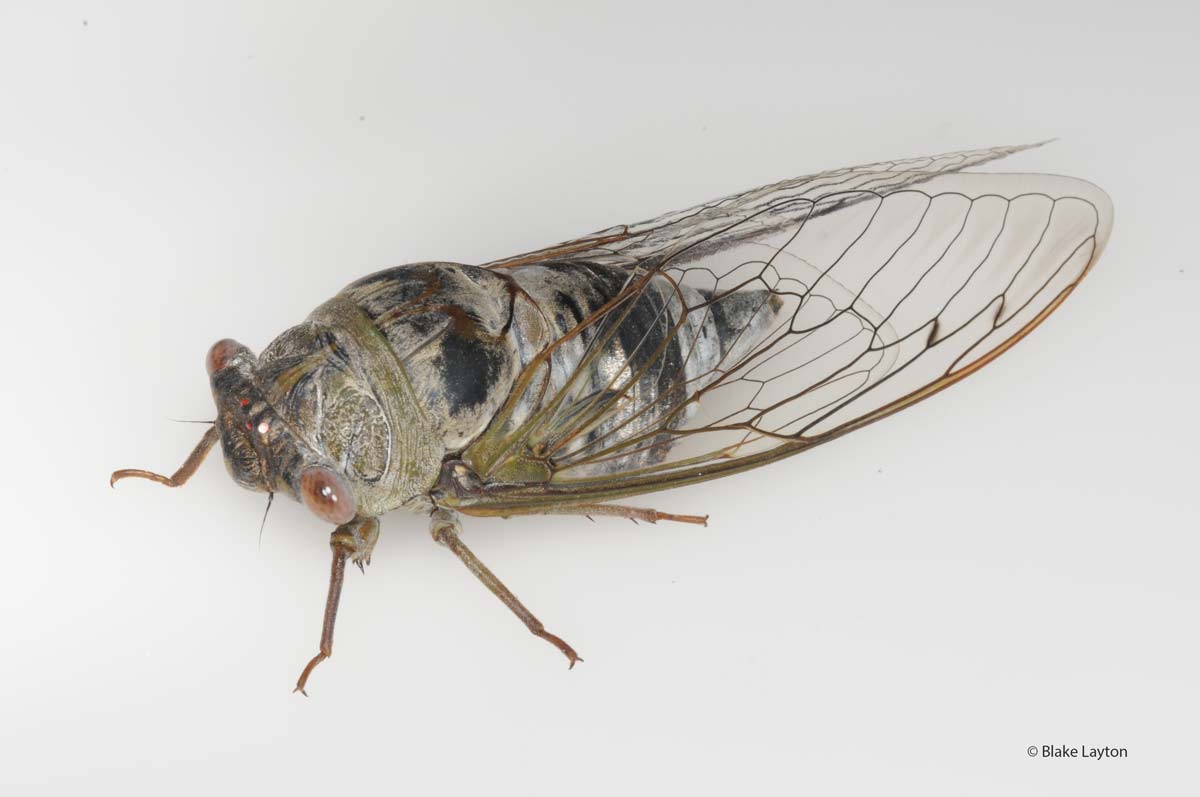Annual Cicadas, Vol. 8, No. 20
Related News
June 17, 2015
June 4, 2015
May 19, 2015

The songs of cicadas are iconic sounds of summer. You probably recognize an annual cicada when you see one, but you may not know there is more than one species. In fact, there are around 20 species of annual cicadas in Mississippi, and they vary considerably in size, appearance, and especially sound. Sound is important to cicadas because males use their songs to attract females of the same species. Pay attention to the cicadas you hear singing this summer and you will probably notice The several different songs. If you want to try to match some of the songs you hear to specific species, check out. This site has songs and photos of our common Mississippi species.
Cicadas sing only during the day. Some, such as the scissor grinder cicada or the Southeastern dusk-singing cicada sing late in the day and up to dark, but those comforting summer nighttime sounds are made by katydids, false katydids, and crickets, not cicadas.
Unlike 13-year cicadas, annual cicadas occur every year, but this does not mean they have a one-year life cycle. Depending on the species, it takes two to five years for them to complete a generation, but the generations overlap so some adults emerge every year. Although cicadas are big, tough-bodied insects, there is a wasp that specializes in preying on them. Cicada killer wasps catch cicadas and fly off with them, paralyzing them with their sting and carrying them back to their burrow as food for their young.
Annual cicadas are the same insects you probably learned to call “locusts” as a child, but this name actually refers to a particular group of grasshoppers, such as the plague locusts mentioned in the Bible, or the, now extinct, Rocky Mountain locust of western North America. These are also the same insects that leave those empty, tan-colored husks clinging to tree trunks. These are left behind by the nymphs as they emerge from the ground, shed their nymphal skins, and transform into adults. Although the nymphs spend their life sucking sap from tree roots, and the adults also feed on sap from twigs, annual cicadas do not cause significant damage to their hosts and are not considered pests.
You can also hear recordings of the songs of various annual cicada species on this website. The song of Megatibicen auletes, the northern dusk singing cicada (shown in photo), will probably sound familiar, but so will several others, such as Neotibicen pruinosus, the scissor grinder cicada, and Neotibicen tibicen tibicen, the morning cicada.
What about periodical cicadas? They sound much different, and they emerge in mid-spring before annual cicadas appear. Periodical cicadas only emerge every 13 years, but we have three broods here in Mississippi, each of which is on a different schedule. Brood 19 will emerge in April of 2024, brood 22 in 2027, and brood 23 in 2027. None of these broods occur statewide, and there are some parts of the state that do not have 13-year cicadas.
Blake Layton, Extension Entomology Specialist, Mississippi State University Extension Service.
The information given here is for educational purposes only. Always read and follow current label directions. Specific commercial products are mentioned as examples only and reference to specific products or trade names is made with the understanding that no discrimination is intended to other products that may also be suitable and appropriately labeled. Mississippi State University is an equal opportunity institution.
Bug’s Eye View is now on Facebook. Join the Bug's Eye View Facebook group here.